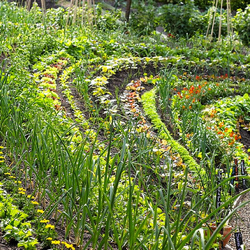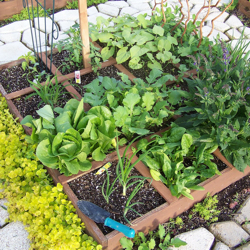
Welcome to Hemlock and Canadice Lakes!
Barns Businesses Cemeteries Churches Clinton & Sullivan Columns Communities Documents Events Time Line Fairs & Festivals Farm & Garden Hiking Homesteads Lake Cottages Lake Scenes Landscapes Library News Articles Old Maps Old Roads & Bridges Organizations People Photo Gallery Podcasts Railroad Reservoir Schools State Forest Veterans Videos
|
Farm and Garden - Task & Technique |
Article courtesy of Mike Ricker. |
|
Tips on Companion Planting By Mike Ricker 9 April 2014 |
||
|
Many of today’s forward thinking gardeners and greenhouse owners already know that certain plants tend to help other plants grow but many of us don’t really understand the concept. It’s called companion gardening and it works with the relationship of one plant or a group of plants that are planted with another group of plants to provide many different benefits resulting in increased crop productivity. Although it may sound like the latest in bio-science technology, companion planting has been around for centuries helping farmers and gardeners grow healthier, more prosperous crops.
Why use companion planting? Companion gardening, when practiced correctly, can effectively solve many pest control, pollination and elemental protection issues in other, less viable, plants. Companion gardening can be used successfully anywhere in the world and can benefit many different plant species. Not only can certain plants be used to repel harmful insects, there are still other plants whose job it is to attract certain insect species which are beneficial to the plants they are companioned with. The African marigold is well known for exuding chemicals through its root system and other above ground parts that repel pests better than any chemical process ever could. Companion planting is used to protect plants from not only insects, but direct sunlight as well. Providing much needed shade can help plants not only survive the harsh summer heat, but thrive and even flourish. Have you ever noticed that there is always a row of trees at one end or the other of a farmer’s field? This is an example of companion planting and the row of trees is acting as a windbreak to protect the crops from damaging high speed winds blowing across the field. Another interesting example of companion gardening is called Increased Level Interaction which basically means that one crop is grown over top of another crop to act as shade or protection from certain bird species. This is especially useful where space is limited and multiple crops are still required. Trap Cropping is yet another example of companion gardening in which one plant that attracts a certain type of harmful insect is planted near a crop that needs protection from insects. The insects are drawn away from the beneficial crop and to the crop planted as a “trap” for them. This method saves money over buying potentially harmful pesticides. This leads us to the Positive Hosting method of companion gardening involving certain trees or entire crops that have certain strict pollination requirements benefitting from different types of flower species being planted in the immediate area of the crop. The flowers main purpose is to attract pollinating insects in large quantities enabling the pollination process to become more widespread across the host crop. A successful method used by Native Americans was called the “Three Sisters” technique and it involved planting three different, yet correlating crops side by side. This may have been corn, pole beans and squash where the corn crop provides the necessary structure for the pole beans to grow healthy and strong. Where does the ground dwelling squash come into play? It acts as ground cover and keeps the weeds at bay so all three plants can grow and produce abundant amounts of food. Each plant has its own unique benefits that it brings to the equation; the corn for its structure, the pole beans for the nitrogen production and the squash as ground cover and pest deterrent. You might also see other plants grown in the area such as sunflowers to draw away certain insect species and a Rocky Mountain Bee Plant which will draw bees to the area for pollination purposes. All of this shows the real success of companion planting; being able to choose plants for their ability to protect other plants is what makes companion planting so ideal for today’s more eco-friendly world. Many organic farmers and gardeners have realized the potential of companion planting as it eliminates the need for harmful chemical pesticides and reduces insect damage, reduces weeds and is a better, more natural way of fertilizing. Gardening more naturally using companion gardening means no more toxic chemicals and healthier, more nutritious plants and vegetables. Another eco-friendly gardening practice is called “Square Foot Gardening” and it involves planting many different species of plant in a very small area, usually a container or raised bed gardening platform. This method is more often used in home gardens where space can sometimes be limited. Being able to grow several different plants in one small area benefits not only certain plants, but the gardener as well as they can produce a much more bountiful yield while using less space. There are several irrigation kits that can be used to aid in the success of your companion gardening methods and they will allow you to maintain a healthy garden from first plant, all the way to harvest. |
||

